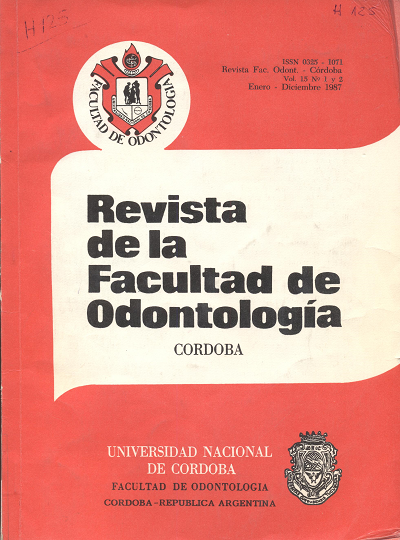Mast cell population in salivary glands of rats which underwent castration and DMBA application
Keywords:
Mastocytosis, Salivary Glands, Rats, 9, 10-Dimethyl-1, 2-benzanthraceneAbstract
castration and simultaneous application of DMBA. Wistar young males were used, in groups of five animales each. They were
sacriíiced lZ, Z3 and Z8 days after the experlment was started. The glands werediss~cted and fixed in 10 % formol at Ph. 7 in arder to be . studiedmorphohistochemically and histometrically. The number of mast cells increased in the sublingual gland (SLG) at all the time perlods studied, outnumbering considerably the cell population in the sub maxillary gland (SMG) lZ days after the animals had been castrated. When comparing uncastrated · animals with castrated ones, it is noticed that the most importantdifíerences in the mast cell population appear in the SLG. With application of DMBA and simultaneous castration, it is observed that the sublingual gland (which normally has very little receptivity to DMBA in un castrated animals) experiences an atypical tissue response accompanied by anincrease in its mast cell populationDownloads
Download data is not yet available.
Downloads
Published
2018-09-19
Issue
Section
ARTÍCULOS
License
Aquellos autores/as que tengan publicaciones con esta revista, aceptan los términos siguientes:
- Los autores/as conservarán sus derechos de autor y garantizarán a la revista el derecho de primera publicación de su obra, el cuál estará simultáneamente sujeto a la Licencia de reconocimiento de Creative Commons que permite a terceros:
- Compartir — copiar y redistribuir el material en cualquier medio o formato
- La licenciante no puede revocar estas libertades en tanto usted siga los términos de la licencia
- Los autores/as podrán adoptar otros acuerdos de licencia no exclusiva de distribución de la versión de la obra publicada (p. ej.: depositarla en un archivo telemático institucional o publicarla en un volumen monográfico) siempre que se indique la publicación inicial en esta revista.
- Se permite y recomienda a los autores/as difundir su obra a través de Internet (p. ej.: en archivos telemáticos institucionales o en su página web) después del su publicación en la revista, lo cual puede producir intercambios interesantes y aumentar las citas de la obra publicada. (Véase El efecto del acceso abierto).

